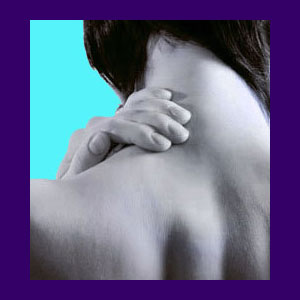
Neck pain in women can come from identical causes of male neck pain, although there are some gender-specific issues which may make many women more susceptible to the degenerative effects of age and activity. The cervical spinal region is far smaller and lighter in structure than the rest of the spinal column and women are known to have a generally smaller and lighter bone structure still, compared to male counterparts.
These factors, along with a greater incidence of low bone density and osteoporosis make women slightly more prone to neck pain due to purely anatomical concerns.
This treatise details female neck pain problems and proposes some unique solutions that can reduce suffering in the cervical spinal region.
Causes of Neck Pain in Women
Neck pain is almost always blamed on a structural issue in the cervical spine. The most commonly implicated conditions are surely herniated discs and spinal arthritis. However there are many other issues which can be theorized to enact pain, including facet joint syndrome and spinal stenosis. While any of these conditions may source symptoms in some instances, many structural diagnostic theories turn out to be incorrect and patients must suffer through a variety of inappropriate and untargeted treatments for nothing.
Lighter and thinner bones are more prone to degeneration, but in most cases, spinal degeneration within the normal limits is not a logical explanation for pain.
Advanced osteoporosis can certainly cause pain in some patients, although many women do not experience any discomfort at all. However, osteoporosis is still a health risk, since it is the major cause of fractured vertebrae and spinal instability in the elderly.
Neck Pain in Women Statistics
In order to maintain a healthy cervical spine, it is crucial for women to eat right and exercise throughout life. Prevention is the key when it comes to bone density issues and is especially vital for women with a genetic predisposition for osteoporosis.
Remember that a great number of structural issues blamed for enacting suffering are misidentified as the actual source of symptoms. In many cases, chronic neck pain is the result of regional ischemia related to emotional factors. For any patient with unresolved and intractable neck pain, it may be worth considering knowledge therapy as one of the more enlightened treatment options.
Breast size-related symptoms often strike in the lower neck and upper back. You can read more about the possibility of neck and back pain due to large breasts and find effective surgical and nonsurgical fixes with minimal research efforts.
Women’s Neck Pain Summary
Although women have a greater risk of suffering problematic spinal degeneration than men from some conditions, they also benefit compared to their male counterparts in other ways:
Women are less likely to deal with work-related chronic neck muscle pain as they age, although some careers still present considerable risk.
Women are also less likely to suffer serious sports injuries or pain syndromes based on emotional repression. Remember to stay in touch with your psychological self to ensure that any emotional issue will not become a physical pain syndrome in your neck or anywhere else in your body.
To learn more about gender-specific causes and contributors to back ache, talk to your doctor. If they can not help you to better understand what you need to do to keep yourself healthy as a woman, then it may be time to find a doctor who can and will.




